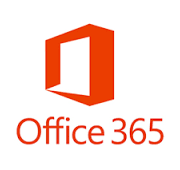 For Small and Midsize Enterprises (SMEs), the regulatory landscape remains in a perpetual state of flux with changes originating at the Federal, state, and local levels. While some rules and regulations can severely impact your business’ operations, and profitability, many create requirements that you can easily satisfy at a nominal cost.
For Small and Midsize Enterprises (SMEs), the regulatory landscape remains in a perpetual state of flux with changes originating at the Federal, state, and local levels. While some rules and regulations can severely impact your business’ operations, and profitability, many create requirements that you can easily satisfy at a nominal cost.
Three regulations with upcoming deadlines or increased enforcement include:
HIPAA
HIPAA compliance is a requirement for any organization that works with personal health information of individuals — not just medical offices and insurance firms. If you are sharing employee information about benefits, insurance coverage, medical leaves, or other items that involve personal health information (PHI), you have an obligation to protect the PHI. Failure to do so can result in heavy fines and, in a few instances, criminal charges.
Historically, HIPAA compliance has focused on medical practices, insurance, and brokers. We are starting to see audits of non-medical companies, along with fines for those not in compliance.
Fortunately, you can protect PHI by focusing on the individuals that are authorized or likely to handle sensitive employee information. By focusing on HR, payroll, and key executive and leadership roles, you can deploy services like message-level email encryption.
What to do:
- For as little as $5 or $6 per user per month, you can ensure that specific individuals protect PHI and sensitive information while preventing accidental disclosure
- Contact us for information about encryption, DLP, and other HIPAA solutions.
ELD
Starting December 18, 2017, all interstate trucks in the US must use an Electronic Logging Device (ELD) to track operations and required reporting. According to the US Department of Transportation (USDOT), fewer than 1/3 of interstate trucks have installed ELDs as of mid-November. Failure to comply can result in heavy fines, impounding of vehicles, and disruption of delivery schedules.
While enforcement is not expected to impact small and midsize trucking firms until late spring or summer of next year, your business can still be at risk.
Here are a few things to note:
- If you have your own truck(s), they may be classified or registered as Interstate Trucks, even if you only deliver within your state.
- If you use third parties for shipping, their failure to comply can disrupt your deliveries if trucks are stopped or impounded, or if drivers are pulled off the road.
What to do:
- Check your own vehicles:
- Determine if they are properly registered as Interstate Trucks, or if they should be registered as such
- If you do not have ELDs yet, please contact us for low cost, self-install ELDs with logging software subscriptions
- Check with your shipper(s):
- Confirm their trucks, those of their subcontractors, and any owner/operators are properly registered and have ELDs
- If not, have them contact us for help
GDPR
Effective May 25, 2018, the European Union (EU) General Data Protection Regulation (GDPR) takes effect. While GDPR covers data protection and privacy for citizens of EU member states, treaties allow enforcement in action against US companies operating within the US.
If you have any personal data for citizens of EU member states, you are responsible for GDPR compliance.
GDPR means more than encrypting sensitive data. GDPR includes processes and procedures for governance, including:
- A named Data Protection Officer (DPO) responsible for oversight, compliance, and response to individual inquiries. The DPO role can be full time or part time, internal or contracted.
- You must report suspected breaches within 72 hours of becoming aware of the issue.
- You need to deploy privacy by design — any new system or change in systems requires primary consideration of privacy and information security.
- You must be able to demonstrate that you mitigate risk, even in the absence of a privacy breach.
Fortunately for most SME’s the appropriate policy changes and the risk-mitigation technologies need not be expensive of complicated.
What to do:
- Discuss GDPR with your team, and your legal counsel, to determine your required compliance
- Provide training, education, and “cultural support” for a data privacy mindset within your organization
- Review systems storing or processing personal information for security and privacy compliance
- Select and deploy relevant data loss prevention (risk mitigation) solutions for your environment
Need help? Contact us for more information.

 QuickBooks is the leading accounting package for small business. And yet, many businesses cannot run QuickBooks Online, the Software-as-a-Service (SaaS) version. Whether the online versions lack industry-specific features you need, or you have integrated third party tools/add-ons, staying with an on-premise version of QuickBooks remains the best solution for your business.
QuickBooks is the leading accounting package for small business. And yet, many businesses cannot run QuickBooks Online, the Software-as-a-Service (SaaS) version. Whether the online versions lack industry-specific features you need, or you have integrated third party tools/add-ons, staying with an on-premise version of QuickBooks remains the best solution for your business. For Small and Midsize Enterprises (SMEs), the regulatory landscape remains in a perpetual state of flux with changes originating at the Federal, state, and local levels. While some rules and regulations can severely impact your business’ operations, and profitability, many create requirements that you can easily satisfy at a nominal cost.
For Small and Midsize Enterprises (SMEs), the regulatory landscape remains in a perpetual state of flux with changes originating at the Federal, state, and local levels. While some rules and regulations can severely impact your business’ operations, and profitability, many create requirements that you can easily satisfy at a nominal cost.
 According to a
According to a  Security is still the biggest fear across SMBs considering the cloud. IT leaders and C-level execs worry about spies, cyberthieves, governments, and vendors access their company’s data. This fear is unfounded.
Security is still the biggest fear across SMBs considering the cloud. IT leaders and C-level execs worry about spies, cyberthieves, governments, and vendors access their company’s data. This fear is unfounded.